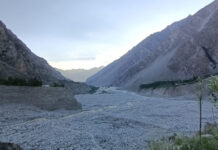The sharp and horrible jaws of shark can be the nightmare of anyone.
You must have witnessed in the movies that how easily the jaws of shark can tear the man apart. Due to the fact sharks are known as man-eaters.
This meat-eating habit has enlisted the shark as a notorious and most frightening animal of the sea. The historians and tale-tellers also have mentioned such incidents when a single bite of shark was capable of engulfing the whole human.
Moreover, you might have noticed the similar conditions while watching the scientific documentaries too. Perhaps, sharks truly know their value being a top predator as they can easily threaten anyone by their sharp jaws.
However, according to the biologists and ecologists, there exists a group of sharks that feed upon plants.
Yes, you read that right, there is a plant-eating shark!
So, it might be a good news for those inquisitive minds that love to study the behavior of shark but on the other hand, the fear of being torn apart holds them back. The plant eating shark, or a herbivore shark, can be a delightful news for them.
The scientists got to know about the plant-eating shark when they observed the feeding habits of this animal. This animal feeds on sea grass, which is a plant.
The brave scientists pondered over the fact that how a certain type of shark that inhabits the coast of America and Gulf of Mexico is eating the sea grass.

According to the nutritional science, living organisms who eat plants cannot digest it completely. One component of plant cell, known as cellulose is difficult to digest. It sticks there in the belly thus; a substantial amount of undigested cellulose passes out from the animal body through excretion. This is the similar case with man too.
Even our stomachs cannot break down that stubborn part of plant cells; hence we simply remove it from our body through excretion.
The fact that scientist found some digested cellulose in the gut of that specific shark, intrigued them to execute some research on that plant eating shark.So, a group of scientists from
The Royal Society started their analysis.
It included Samantha Leigh and her colleagues. Samantha belongs to University of California. The work was chiefly funded by National Geographic Society Young Explorer Grant, the UCI OCEANS Graduate Research Fellowship and others.
The scientists revealed that plant eating shark is known as Bonnethead Shark.
According to the International Union for Conservation of Nature (IUCN), the Bonnethead Shark is a very abundant, small hammerhead that is found in shallow waters of American coast and Gulf of Mexico
This shark has the highest population growth rates as compared with sharks. The animal feeds on mollusks- hard shelled animals, crustaceans- like shrimps and sea grass- as it has been mentioned above.
So you see, no man eating history nor any meat loving habit at all.
Samantha and her colleagues started their research by catching four dead bonnethead sharks from wild. Later, the animals were weighted and dissected. Along with that, five sharks were caught alive. Researchers fed them thesea grass.
The study period lasted for three weeks. Blood drawn from the body of animals and analysis of fecal contents revealed that surprisingly, bonnethead sharks does not only eat the sea grass, they are capable of digesting it and can obtain energy from it. By digesting sea grass mean, they can tear apart the stubborn cellulose too.
So how do they do that? Samantha and her team concluded that the bonnethead contains some special chemicals and little agents called enzymes and microbes respectively in its stomach, which are capable of breaking down the cellulose part of cell. Plus, these sharks contain special teeth which assist in chewing the sea grass.
Thus, this is first shark in the history that eats plants, that is, a herbivore shark.
The discovery has astonished the researchers and scientists, especially those who study the ecology and food webs of the animals. This finding will surely trigger them to learn more about the feeding habits of animals.
Most probably, the students will have to update their information related to food webs and sharks.
Now, you won’t have to get frightened from sharks like you used to do earlier.
But beware, next time you see a shark, know that the shark should be cute, plant loving Bonnethead Shark and you can be safe and sound.




























